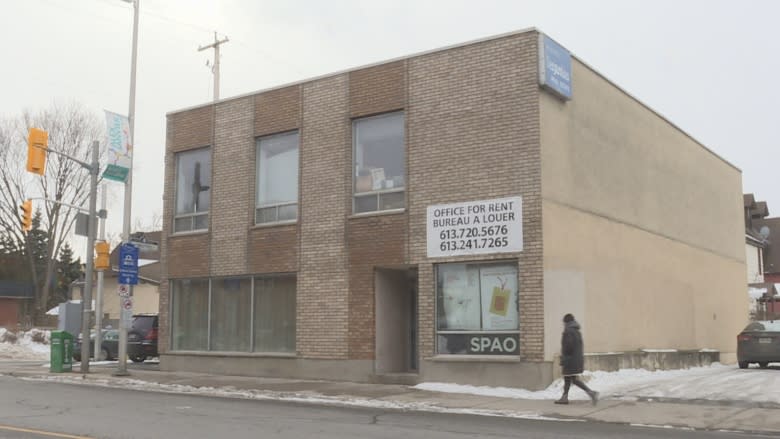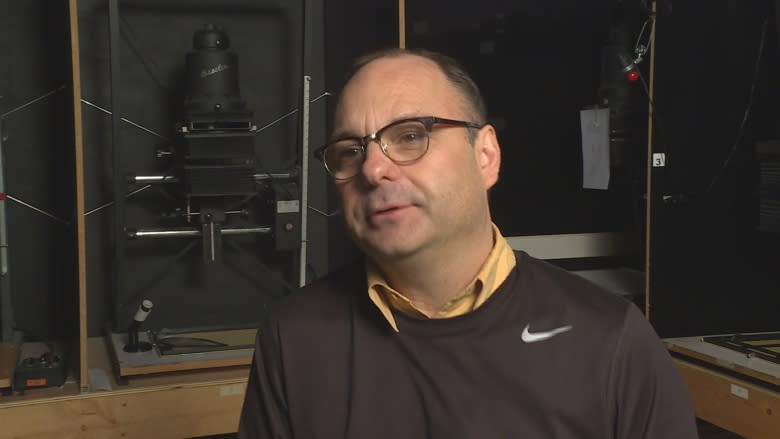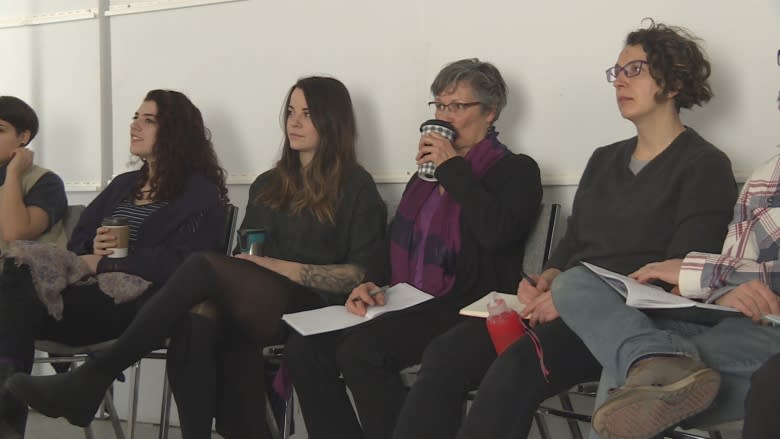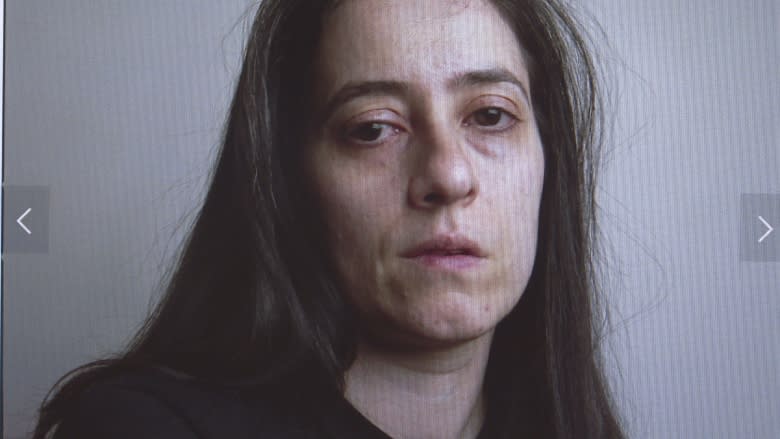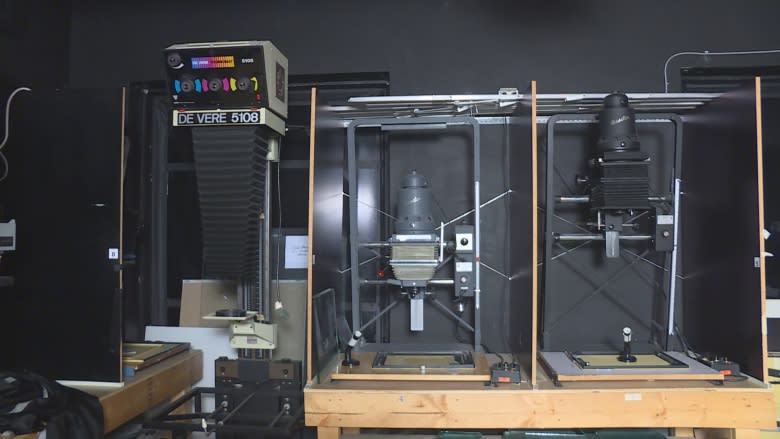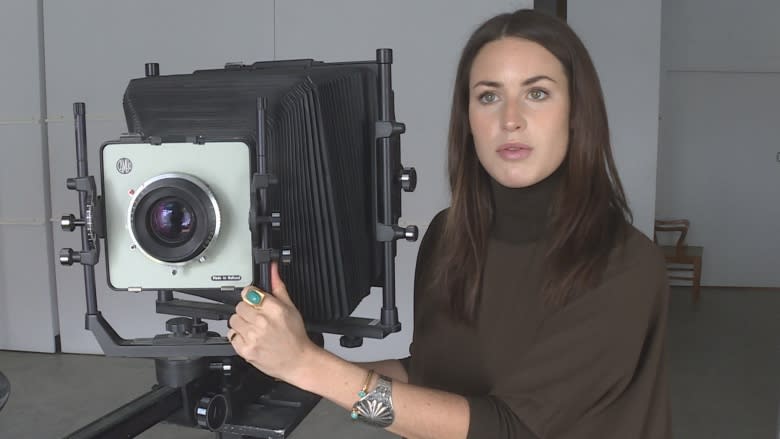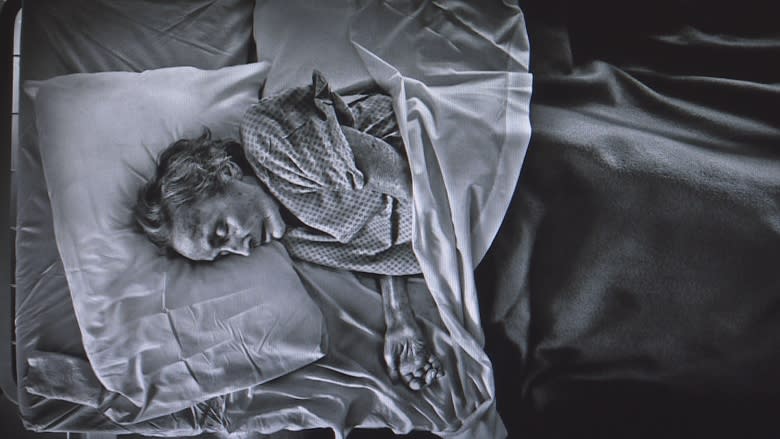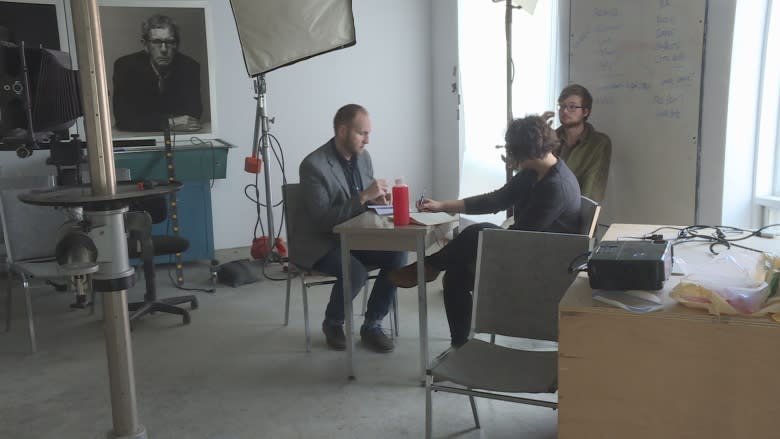School of the Photographic Arts: Ottawa is a small school — with a big vision
The School of Photographic Arts: Ottawa (SPAO) has to be one of the most unusual learning institutions in Canada and it's definitely one of the smallest.
The school, which has less floor space than some condos, is located in an old, nondescript building on Dalhousie Street in the Byward Market. A real estate company is the only other tenant.
Unlike many other private schools, SPAO operates as a non-profit, registered charity. The tiny campus and humble trappings give the place a sort of underground, creative vibe.
"The best thing about this place is when every room is humming," said Michael Tardioli, SPAO's director of education and mentorship.
Now, after 12 years in operation, the school is expanding and moving into fancy, new digs in Little Italy in September.
"We are really, really excited. We will be adding a formal gallery space, so adding a gallery to the Ottawa community when so many galleries have been closing," said Jonathan Hobin, the school's executive and creative director.
The expansion is also happening at a time when other small photography schools have been disappearing. Two years ago the Western Academy of Photography in British Columbia shut its doors because of financial problems. Just last year, two larger schools in the United States went under, including the Brooks Institute in California, which was one of the most famous photography schools in the world with alumni that includes Canadian astronaut, Roberta Bondar.
Student built
Tardioli used to teach photography at Algonquin College, but 12 years ago he and a group of students decided to quit —and launch their own school.
"They put up the drywall and they put their tuition from Algonquin towards funding the school. And so it's student built," Hobin said.
Now, the students range from teenagers to octogenarians.
Olivia Johnston, a professional photographer who teaches history and theory at SPAO, said the wide range of ages adds to the unique environment.
"The older students get something from the younger students and the younger students really gain something from the older students, as well," she said.
Some of the school's students used to be enrolled in university or college arts programs — and say SPAO is a much different experience. You don't have the option of disappearing into the back of the classroom or wandering off down a hallway. You have nowhere to hide so you have to create, one student says.
SPAO offers a two-year diploma program, but a large portion of the revenue comes from continuing-education evening-classes. Tuition ranges from hundreds of dollars for part-time courses to thousands of dollars for the full-time program.
Love affair with film
SPAO is a place that allows students to step away from the digital world and explore the classic look of film.
Students are taught how to shoot on digital cameras, but only after learning the way photos used to be created.
A view camera, designed for eight by ten inch sheet film, lives in the school's studio. The camera, which produces prints with superb clarity and tonality, is the same kind used by legendary photographers, such as Ansel Adams and Edward Weston.
The school also has a darkroom filled with enlargers, some donated by well-known photographers. There are trays for holding chemicals, tongs, beakers, bottles of chemicals for developing film and paper prints.
"I'm so not into digital, right now," said Lucia Mugica, a twenty-something, first year diploma student.
That's also the case with Pablo Gaytan Melendez, another young first year student.
"I was really interested in film. Most college programs, they don't really offer the film side of photography," he said.
Expansion 'bittersweet'
The school may be moving into a state of the art facility, but the huge cameras and tank-like enlargers will be making the trip as well. The staff is keen to keep the focus on old school techniques and singular artistic-expression.
"Our process really does slow down the student and force them to think about every image and the importance of every photograph they take," says Whitney Lewis-Smith, an Ottawa visual artist and SPAO instructor.
When it's built, the new facility in Little Italy will have room to accommodate close to 50 students, but Hobin said the school will limit enrolment to a maximum of 16 students in both first and second year programs.
The building at the future site of the new school on Pamilla Street currently looks like an abandoned auto mechanics garage. But thanks in part to family connections, the warehouse is going to be transformed into a modern teaching facility.
Hobin's father, Barry Hobin, is an architect who will help with the project a "a very low cost," Hobin said.
"It is a purpose built renovation of the existing warehouse. We feel it is important to preserve the character of the neighbourhood," he said.
Tardioli said the move is exciting but will also be "bittersweet." He doesn't want SPAO to lose sight of its roots when it opens in its new home in the fall.
"As much as SPAO needs to get civilized, which it is going to get, I kind of still want it uncivilized at bit. I want it to be a crazy place to hang out all day."

